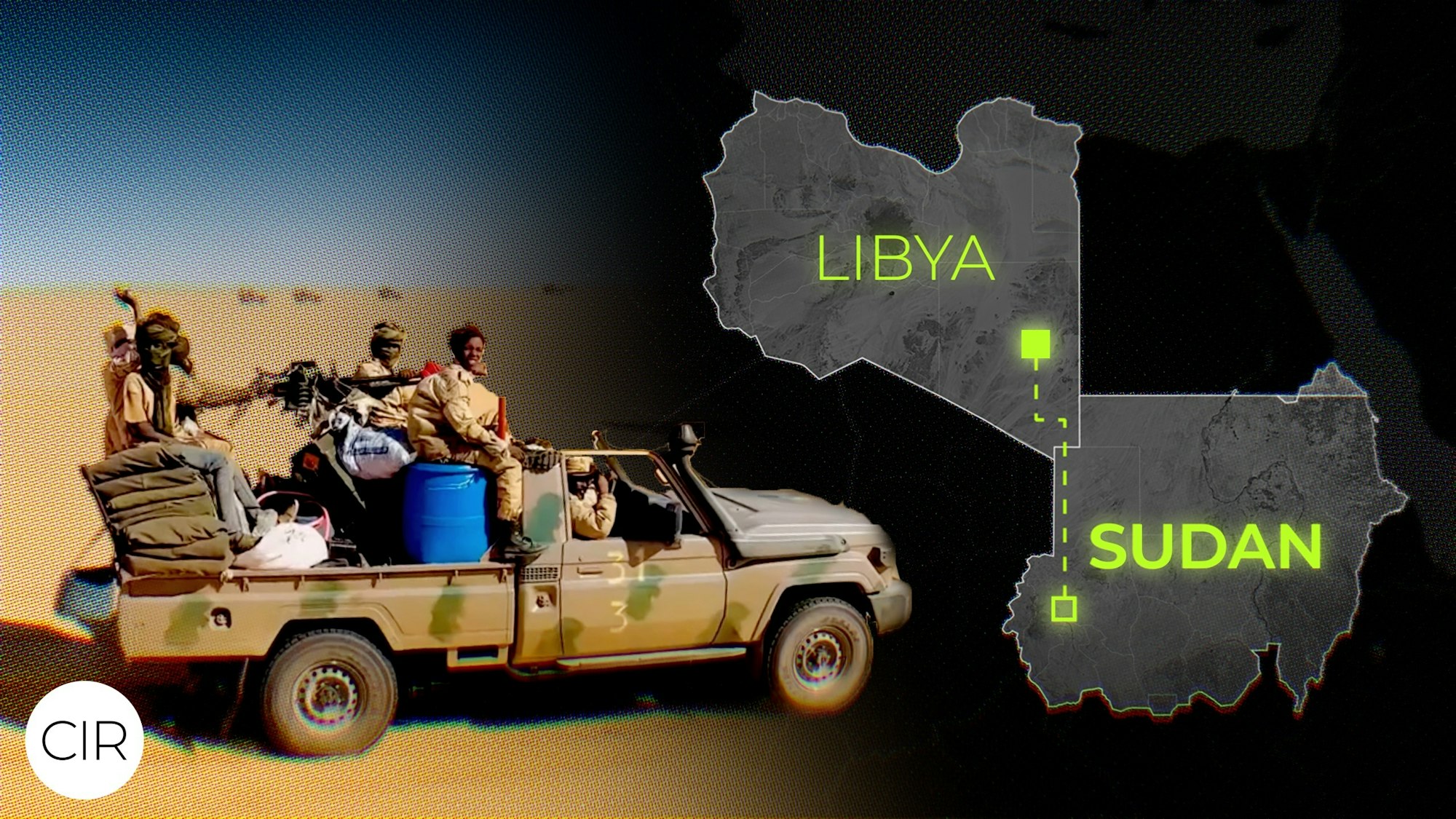A new CIR documentary has uncovered the location of a Rapid Support Forces (RSF) military camp in the desert of Sudan’s neighbour, Libya. A vehicle that was found in the camp was matched with a vehicle used in the violent takeover of the Zamzam camp for internally displaced people, in North Darfur. We also found a direct link between the RSF camp in Libya and a senior RSF commander.
Some links have been removed to avoid amplifying content. The coordinates of the military camp have also been withheld, but are available upon request.
In early 2025, a series of videos emerged online. Some showed large convoys of RSF fighters driving through a desert in trucks equipped with a variety of weapons, including machine guns and anti-aircraft guns. Others, also filmed in a desert landscape, showed hundreds of trucks stationed in what appears to be an established military camp.
Separately, these videos provide snippets of information, allowing us to identify fighters, uniforms, equipment, and some of the locations where they were filmed. Pieced together, they reveal that military equipment is being transported, on a large scale, through Libya, some of which is directly linked to violence in the Sudan war.
By analysing hundreds of videos posted to social media, CIR was able to match armoured vehicles, uniforms, and fighters seen in the desert footage to videos filmed in Sudan. We can connect these vehicles and fighters to senior RSF leadership, and we can go further still – identifying a commander using one of these vehicles during an attack on the Zamzam camp for internally displaced people in April 2025.















